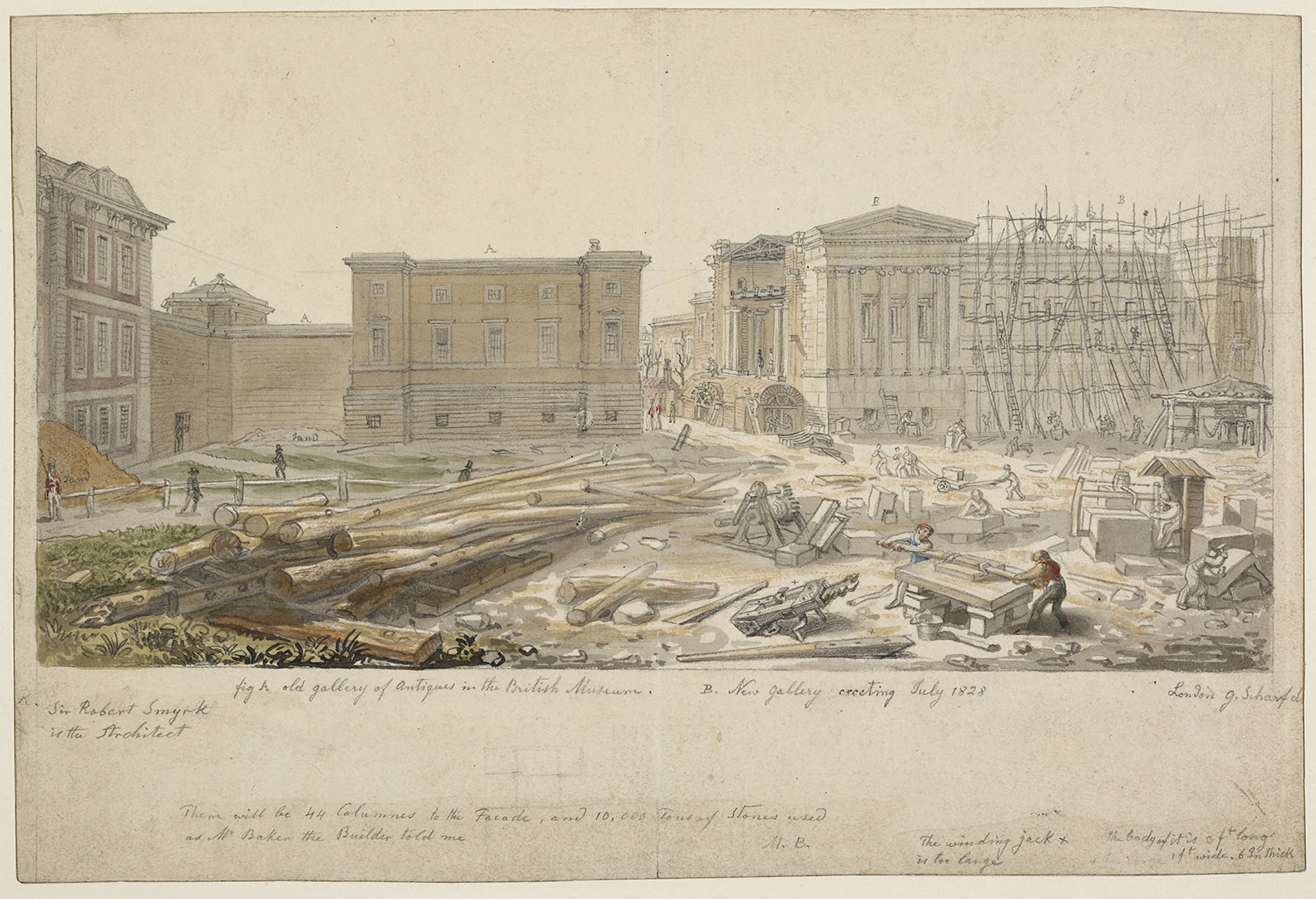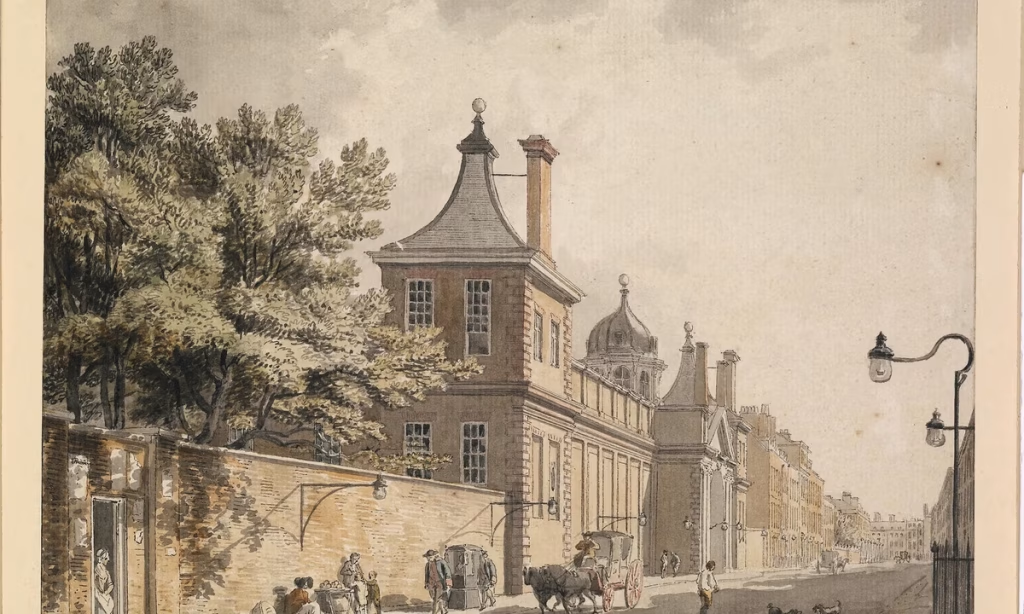In March 1958, British television viewers were treated to a museal experiment. For the second episode of his new series, Is Art Necessary?, Kenneth Clark, then chair of the Arts Council, took Henry Moore on a tour of the British Museum at midnight. Armed with, critics noted, “enormous torchlights”, the art historian and the sculptor spotlit the megalithic stone moai from Rapa Nui (Easter Island), some monumental Egyptian treasures and the Parthenon Sculptures. The slim shafts of light they cast about threw the objects into uncommon relief. They flicked their torches on and off at the Panathenaic horsemen to make it look “as if they were galloping”. Clark told his viewers he had brought Moore along because, “of all living artists”, he had been best able to inspire awe in the way of ancient art. It was, he said, “a universal language of form”.
The British Museum was founded by an act of parliament in 1753 as a repository for several private collections: Hans Sloane’s compendium of the “rare and curious”, as the act put it (“Library of Books, Drawings, Manuscripts, Prints, Medals, and Coins, ancient and modern, Seals, Cameos, and Intaglios, Precious Stones, Agates, Jaspers, Vessels of Agate and Jasper, Chrystals [sic], Mathematical Instruments, Drawings, and Pictures, and all other Things”, which cost the state £20,000); the Cotton family’s collection of manuscripts (which included the Lindisfarne Gospels, a Beowulf, two Magna Cartas and the fourth-century, Greek-language Cotton Genesis); and the Harleian collection of manuscripts (for which the government paid the first Earl of Oxford £10,000).
Wide-eyed enthusiasm
Sloane’s will made clear, the act specifies, that all these treasures were to be preserved “for the Use and Benefit of the Publick, with free Access to view and peruse”. In the 1739 iteration of his will, he had waxed lyrical about his desire for the collection to be for “the benefit of mankind”. And those contemporaries, whom he had charged with overseeing it once he no longer could, relate the wide-eyed enthusiasm that had driven him to compile it. “You will scarce guess how I employ my time,” wrote one trustee after Sloane’s death, “chiefly at present in the guardianship of embryos and cockleshells.” Another dubbed the miscellany Sloane’s “nicknackatory”. You get the feeling Sloane would have been right there with Clark and Moore, gleefully waving torches about at all these awesome, ancient things of beauty and intrigue.
Lessons learned from evacuations and sandbagging during the First World War—as in the Egyptian Gallery—helped the museum evacuate in eight days at the onset of the Second World War © The Trustees of the British Museum
Even a short amble through both the physical halls of the UK’s most popular museum (6,479,952 visitors in 2024) and its 272-year-long history is enough to understand that this is an institution that never stands still. “We don’t close to do any works,” says the head of design management, Alex Surguladze. “We always keep the museum open and we work around the public.” Since day one, it has been, he says, a site of construction and ongoing transformation.
Upon the museum’s founding, the government set about looking for a building within which to house it. Several options were on the table.
Minutes from a board meeting on 3 April 1754 show the trustees quizzing John Vardy, the Royal Office of Works architect, about potentially incorporating it into the late William Kent’s general plan for a new Houses of Parliament. Damp, and the expense involved in combating it, was deemed too big an issue. Buckingham House, the future Buckingham Palace, was another possibility, but it too was deemed overly expensive.
Montagu House in Bloomsbury, by contrast, held promise. This French-style mansion, surrounded by gardens, paddocks and fields, had stood empty since a fire in 1686. The Earl of Cardigan duly sold it to the state for £10,000 and builders got to work. The gardens opened to the public in 1757 and the gallery and collections two years later. Within a year, the museum counted 12,000 visitors a year.
Space, and the lack of it, Surguladze says, has continually shaped the building. As with its founding imperative to house three disparate men’s obsessions, successive collections —purchased or bequeathed—have dictated how the institution should morph. Upon the death of the trustee Charles Townley, in 1805, the museum bought his pre-eminent collection of Roman marbles, cameos and intaglios, for £20,000; the British Museum’s Townley Gallery opened to the public three years later.

George Scharf’s 1828 depiction of the construction of the West Wing. Left of centre is the Townley Gallery, established in 1808 to house the classical antiquities collection of Charles Townley © The Trustees of the British Museum
Following the subsequent additions of the Parthenon Sculptures in 1816 and George IV’s library in 1823, trustees signed off on Robert Smirke’s masterplan for an entirely new building, to be built wing by wing around a central quadrangle.
It was the biggest building site in Europe, with a dual operating principle: to stay open and to protect the collection. In the floor paving of the Egyptian Gallery, in the West Wing, is the outline of a floor lift. Operated by what Surguladze describes as “the biggest chain you ever saw”, it leads to the ground floor below—at present back-of-house space—beyond which is a large coach door. Etchings depict the merchant navy rolling in enormous objects on log rollers.
Shortly before Montagu House was finally destroyed in 1845 to complete Smirke’s plan, William Henry Fox Talbot captured the mansion’s upper storey and chimneyed roof in a murky calotype print. Despite the aged photographic quality, the contrast of the older building with Smirke’s patrician Greek Revival could not be stronger.
Smirke’s plans would take three decades to be completed, his vision altered—through necessity, cost and taste—to the point where, as the curator Thomas Kiely has put it, “even to speak of an original design is not quite correct, as to some extent the Museum was ‘ever in a state of becoming’ throughout the 19th century”. The great colonnade of the monumental Ionic facade was the final piece of the puzzle. But even that did not mark the end of construction.
In the 1880s, Sloane’s natural history specimens were moved to a new site in South Kensington. This birthed what would become the Natural History Museum. The museum’s books and manuscript holdings, meanwhile, grew to the point where another distinct institution—the British Library—became necessary (in 1973).
We don’t close to do any works. We always keep the museum open and we work around the public
Alex Surguladze, head of design management, British Museum
The early 20th century saw a second masterplan approved, which, if enacted, would have seen all the Georgian terraces on either side demolished, and the museum, as Surguladze puts it, “extend in basically every direction”. But the outbreak of war stopped proceedings, with only the northern Asian galleries completed. The Second World War brought further disruption (evacuations to Wales, Wiltshire, Northamptonshire and Aldwych Tube tunnel) and substantial bomb damage.
Post-war modernisation
Post-war emphasis, in keeping with the rest of Europe under reconstruction, was to modernise. The director John Wyndham Pope-Hennessy wrote of the newly designed Mausoleum of Halikarnassos rooms—these 350BC sculptures of quite impossible beauty sparsely set against pale walls and square-tiled floors—that they were “the best designed galleries of classical sculpture anywhere in the world”. Surguladze says that “we unkindly call them our swimming pool gallery”.
As tastes have changed, so have visitor and curatorial priorities. Today, the colonnaded façade is the British Museum’s icon. But within, the museum’s organisation is everything but obvious. Architecturally, it remains a disjointed, idiosyncratic assemblage of around 30 buildings, every surface, wall colour, flooring material and display mechanism telling the story of how this big idea came to be. At any given moment, almost all of its holdings—99% of 8 million objects—are not on display. And the public largely ignores most of what is. Visitors usually enter the Great Court, head for the Rosetta Stone, look at the Parthenon Sculptures and then the mummies. “And then if they’re still here, they’ll go and see one other thing,” Surguladze says. “What we struggle with is actually getting visitors deep into these galleries.” The grand redesign of the Western Range, then, is but the latest in a long string of ambitious experimentations to bring to ever more people all things rare and curious.
